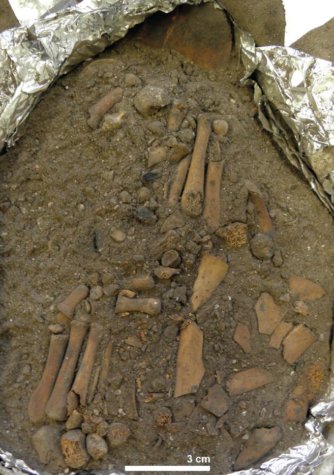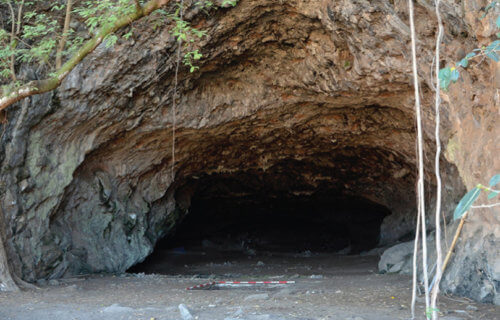ALOR ISLAND, Indonesia — Humanity has done a pretty good job of recording its collective history over the past two or three thousand years. Earlier time periods, though, are still very much shrouded in mystery. Now, a groundbreaking new archeological discovery in Indonesia is revealing secrets from 8,000 years ago.
Archeologists from The Australian National University have discovered an ancient child burial site located on Alor Island, Indonesia. While a funeral for a child is no doubt a morose and depressing event in any century, this unearthing is providing some invaluable insight on early mid-Holocene era cultural and burial practices.
Stunning burial practices unearthed

According to lead researcher Dr. Sofia Samper Carro, it’s clear that the child was laid to rest with a formal ceremony of some kind. The research team estimates the child was between four and eight years-old at the time of death.
“Ochre pigment was applied to the cheeks and forehead and an ochre-colored cobble stone was placed under the child’s head when they were buried,” she says in a university release. “Child burials are very rare and this complete burial is the only one from this time period,”
“From 3,000 years ago to modern times, we start seeing more child burials and these are very well studied. But, with nothing from the early Holocene period, we just don’t know how people of this era treated their dead children. This find will change that.”
Of particular note is the fact that the child’s arms and legs appear to have been removed and stored elsewhere before the rest of the body was buried. This sounds rather odd from a modern perspective, but researchers say it isn’t wholly unprecedented.
“The lack of long bones is a practice that has been documented in several other burials from a similar time period in Java, Borneo and Flores, but this is the first time we have seen it in a child’s burial,” Dr. Carro adds.
Why did ancient cultures remove arms and legs before burials?
The answer is probably lost to the sands of time, but researchers theorize some form of religion or spiritual belief is a likely explanation.
“We don’t know why long bone removal was practiced, but it’s likely some aspect of the belief system of the people who lived at this time,” Carro adds.
While teeth examinations project the child as being around six to eight years-old, the full skeleton appears to be closer to four or five years-old.
“We want to do some further paleo-health research to find out if this smaller skeleton is related to diet or the environment or possibly to being genetically isolated on an island,” the lead researcher comments. “My earlier work from Alor showed adult skulls were also small. These hunter-gatherers had a mainly marine diet and there is evidence to suggest protein saturation from a single food source can cause symptoms of mal-nourishment, which affects growth. However, they could have been eating other terrestrial resources such as tubers.”
“By comparing other adult burials we have found from the same time period with this child burial in a future project, we hope to build a chronology and general view of burial practices in this region from between 12,000 to 7,000 years ago which at the moment is still scant.”
The study is published in Quaternary International.
